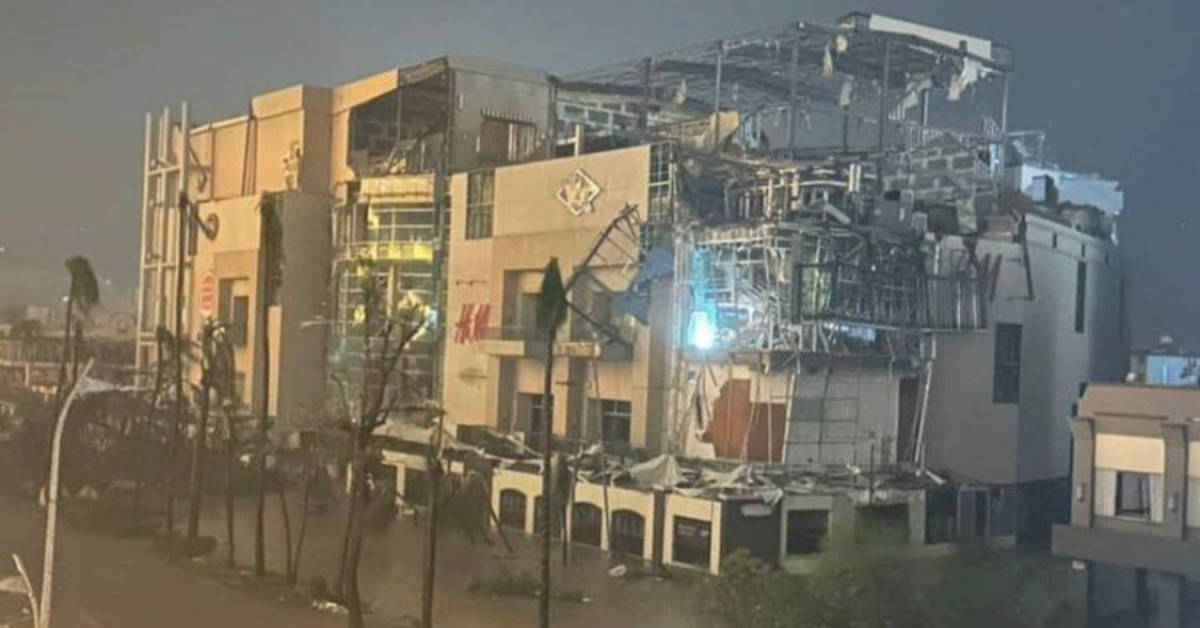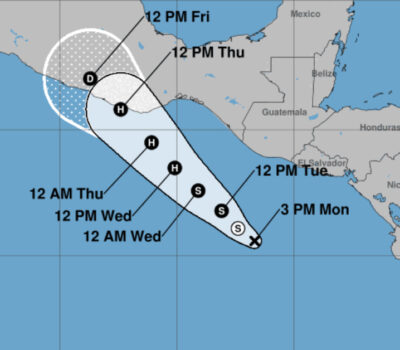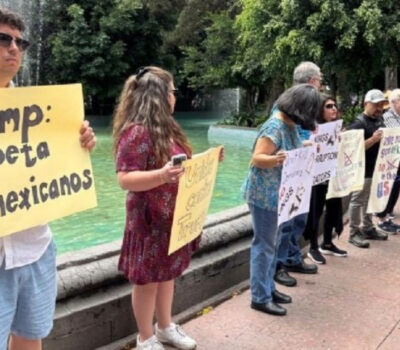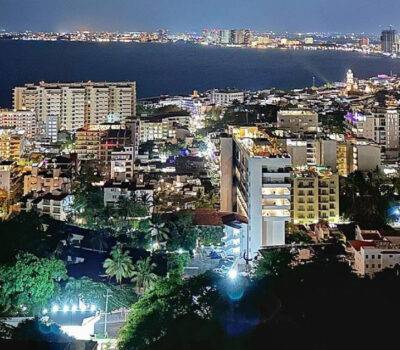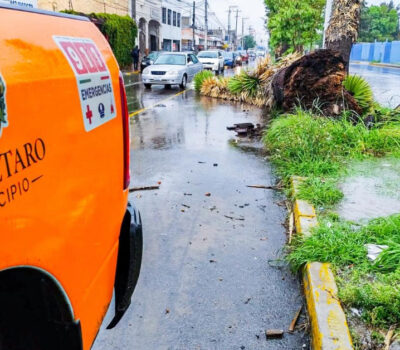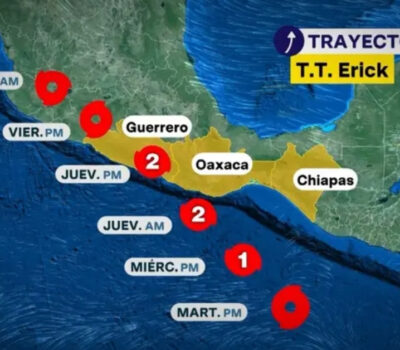PUERTO VALLARTA (PVDN) – Hurricane Otis, a catastrophic Category 5 storm, made landfall on Mexico’s southern Pacific coast early Wednesday, bringing perilous winds and torrential rainfall to the coastal city of Acapulco and neighboring regions. The event has reignited memories of Hurricane Pauline from 1997, which resulted in significant loss of life and property.
Otis has since weakened to a Category 2, but remains a formidable threat, especially as it traverses Guerrero state’s rugged terrain. Forecasters predict a swift weakening of the storm over the mountainous regions. However, the projected rainfall of 5 to 10 inches (13 to 25 centimeters), with isolated areas receiving up to 15 inches (38 centimeters), amplifies the risk of devastating landslides and flooding. As of the last update, the storm was situated approximately 25 miles (40 kilometers) north northwest of Acapulco, with maximum sustained winds diminishing to 130 mph (215 kph). The hurricane is moving inland at a pace of 10 mph (17 kph).
Having escalated from a tropical storm to a Category 5 hurricane within a span of just 12 hours on Tuesday, Otis caught many residents of Guerrero’s coast off guard, leaving little time for adequate preparation. Acapulco Mayor Abelina López announced a state of “maximum alert” Tuesday evening and advised residents to either stay indoors or relocate to designated shelters. “Otis is stronger than Hurricane Pauline that hit Acapulco in 1997,” López added, referencing the storm that killed over 200 people and injured hundreds more in the region.
Between the internationally celebrated resorts of Acapulco and Zihuatanejo lie smaller towns and villages susceptible to the storm’s wrath, intensifying the scale of potential disaster. This comes on the heels of Hurricane Norma, which impacted the southern tip of Mexico’s Baja California Peninsula just days ago. The arrival of Otis also disrupted tropical vacations for tourists and led to the cancellation of a mining convention in Acapulco. David Hall, a sales professional attending the convention, described the conditions as “apocalyptic.”
Guerrero, already one of Mexico’s most impoverished and violent states, is grappling with the impacts of Otis while still reeling from a recent tragedy—just this Monday, a local police chief and 12 officers were found massacred near the hurricane’s impact zone. Meanwhile, Acapulco, a city of over 1 million residents, faces its own unique challenges, with both luxury homes and slums precariously positioned on its steep slopes overlooking the Pacific Ocean.
Travelers like David Hall, who were in Acapulco for professional reasons, have found themselves stranded due to the storm. “The wind was so strong, it was so much noise,” Hall recounted. “It was really terrifying.” He also shared that the staff of the Princess Mundo Imperial Hotel have been hosting guests in large meeting spaces. Despite the atmosphere calming down on Wednesday morning, Hall remained uncertain about the resumption of the convention, stating, “I need to find a way to go back to my family.”
For those caught in the path of Hurricane Otis, the coming days will be a critical period for both rescue and recovery efforts as the nation confronts another devastating natural disaster.
PUERTO VALLARTA (PVDN) - Hurricane Otis, a catastrophic Category 5 storm, made landfall on Mexico's southern Pacific coast early Wednesday, bringing perilous winds and . . .

